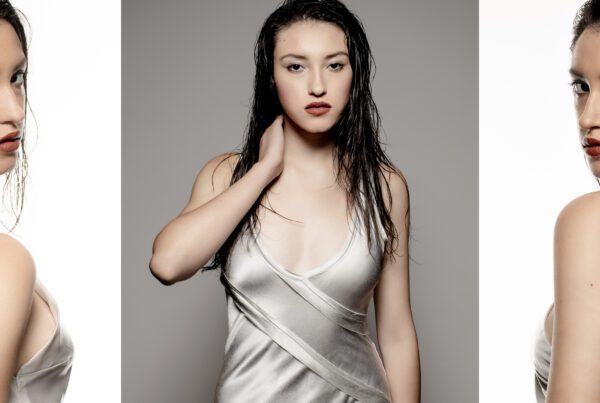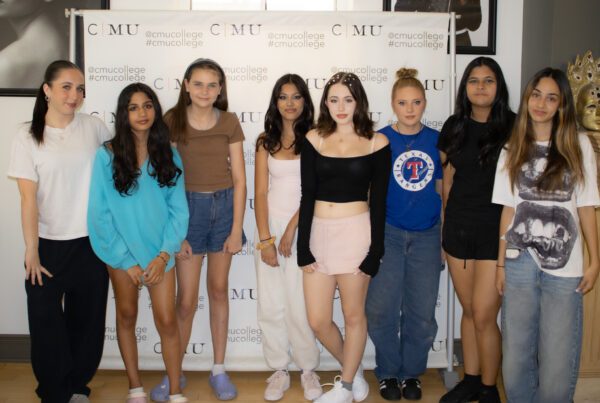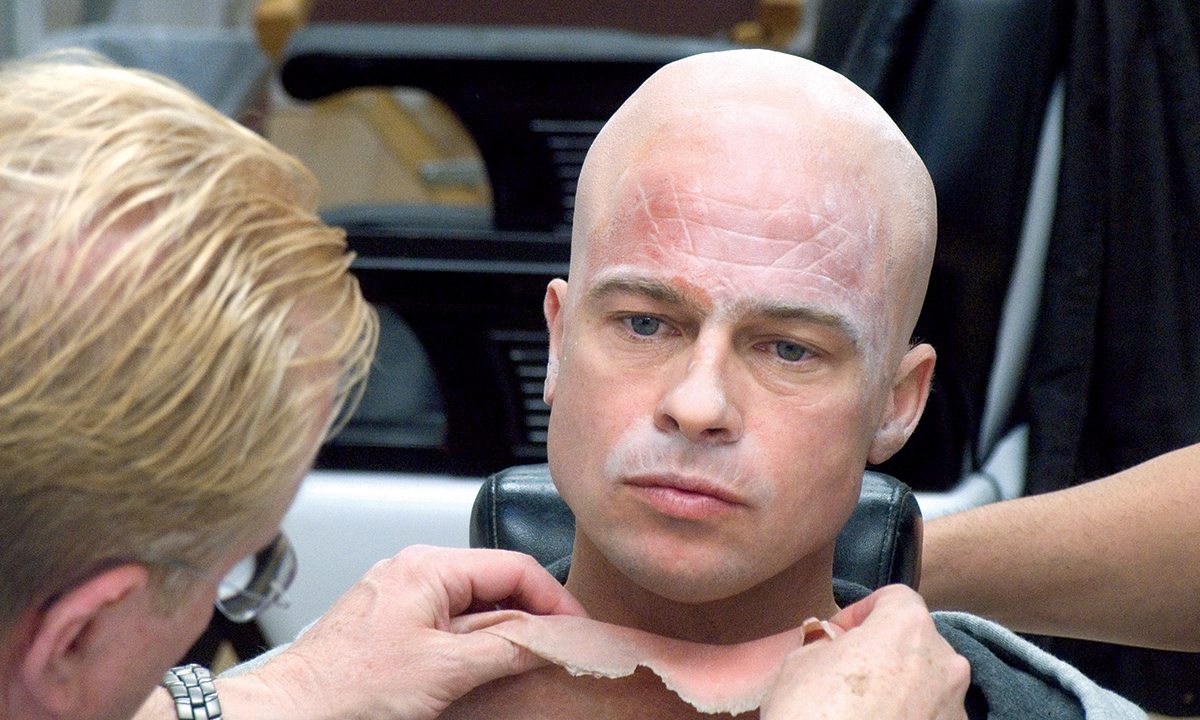
The desire to look younger and younger as we age has built a multi-billion dollar market for cosmetic surgery. For the makeup department behind The Curious Case of Benjamin Button, the miracle cure for aging didn’t require a scalpel, just detailed and intricate prosthetics and special effects makeup. The film, based on a short story by F. Scott Fitzgerald, tells the story of a man who, due to a rare condition, ages in reverse – starting his life as an octogenarian-looking newborn and gradually aging into an elderly baby. Brad Pitt stars as the title character and Cate Blanchett as his love interest, Daisy Fuller.
The movie had been workshopped around by studios as far back as the mid-1980s before actually entering production in 2005. Many deemed the project too ambitious given the central plot of time and aging. The prospect of applying aging makeup realistically and convincingly was a daunting task but with modern advancements in makeup and technology, legendary director David Fincher knew it was possible. Greg Cannom, the age makeup creator and applicator on the film, worked for 18 months on the project, crafting and perfecting the appliances and application process. The actual filming of the movie lasted only 9 months. The result was 13 nominations and three wins, including Best Achievement in Makeup, at the 2009 Oscars.

Cannom, who is known for his previous Academy wins for Mrs. Doubtfire and Dracula, credited the amount of time he was able to spend researching, sculpting and testing designs, for the movie’s makeup success.
In his tests, Cannom found that applying silicone based transfer makeup was the most efficient way for aging makeup. He found that it looked the most natural and, because the tissue-paper-thin application, was able to blend and recreate natural looking creases and wrinkles. The thin application also made it so throughout the day filming, it wasn’t uncomfortable for Pitt to act in. During production, they had multiple prosthetics pieces for all the ages they wanted to portray Button in. Although minimal in appearance, each piece was detailed and required intricate application as a slight shift in application to the forehead, mouth or crows feet could change the actor’s age and appearance altogether. Cannom had even said that keeping track of the age progression in relation to filming and the makeup being used was quite confusing and that they needed a map to figure out what age the actors ought to be.
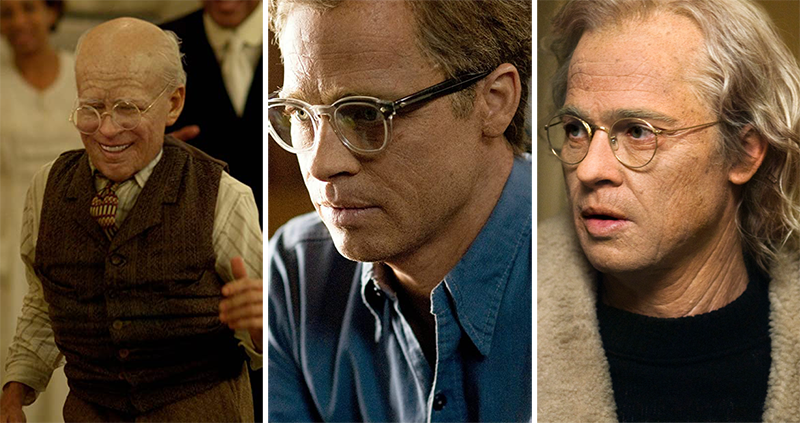
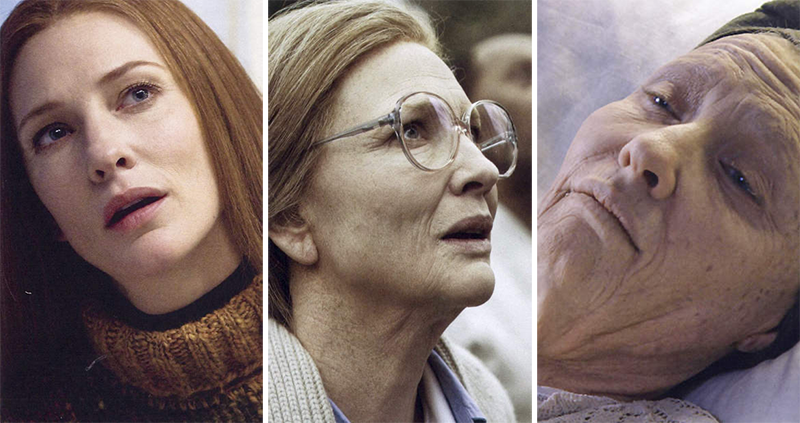
To create the most authentic aging evolution, the team started at age 76 as a base of reference and worked toward a younger Button. This age, along with the mid to later stages of Button’s character was done through practical makeup application. When designing the young and elderly stages of Button, they used new technology to make it as accurate as possible.
The first hour of the film featured a CGI Brad Pitt that was superimposed on a different actor’s body. Through a groundbreaking motion capturing service called Mova’s Contour, the film used a combination of a 3D digitally rendered model of Pitt along with live footage of Pitt performing the same scenes to effectively create a realistic and convincing digital head. The makeup team had to create a plaster of Pitt’s head that was then used for scanning to create the 3D rendered model of Pitt’s head.
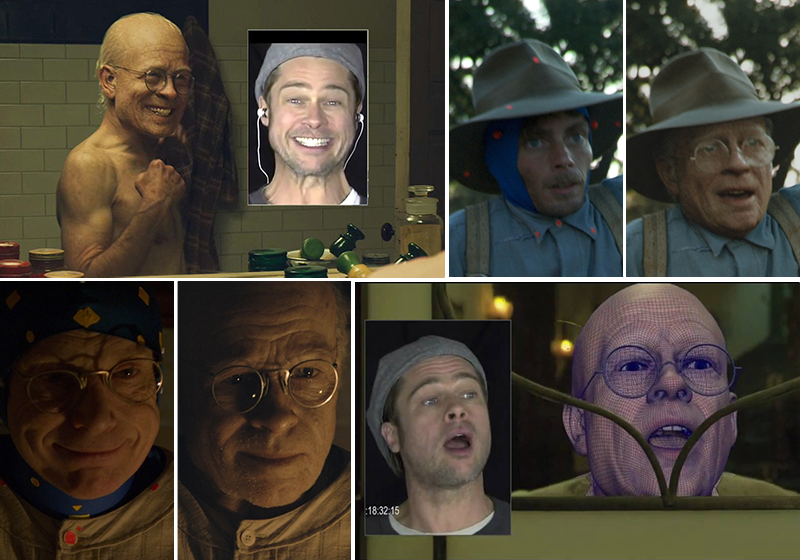
The Curious Case of Benjamin Button is yet another movie that shows how practical makeup and digital SFX work in tandem. The movie does a great job in utilizing and blending both practices that many can’t tell when SFX is used and when we are seeing Pitt disguised by prosthetics. This is a movie that is triumphant in breaking boundaries and introducing a new way of movie making and makeup artistry.


